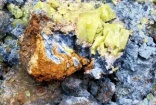Home › magazine › latest news › Could antibacterial clay fight superbugs?
Could antibacterial clay fight superbugs?
13th of August 2014Antibacterial properties have been discovered in natural clay deposits - and researchers hope that these will help in the fight against superbugs.
The clay was found in a volcanic deposit near Crater Lake, Oregon in the US. Thought to be between 20 and 30 million years old, it was formed from silica-rich magma and hydrothermal water resulting from volcanic eruptions over the past 70,000 years.
Believing the clay might hold antibacterial properties, Arizona State University scientist Lynda Williams and colleague Keith Morrison incubated the pathogens e.coli and Staphylococcus epidermidis with clays from different zones of the Oregon deposit.
They found that the clays' rapid uptake of iron impaired bacterial metabolism. The cells were flooded with excess iron which overwhelmed iron storage proteins and killed the bacteria.
The clay could lead to the discovery of new antibacterial mechanisms, according to Williams. "This would benefit the healthcare industry and people in developing nations," she said. "As antibiotic-resistant bacterial strains emerge and pose increasing health risks, new antibacterial agents are urgently needed."
Clay samples found in the area proved active against a broad spectrum of bacteria including MRSA. "Minerals have long had a role in non-traditional medicine," says Enriqueta Barrera, a programme director at the National Science Foundation which funded the research.
"Yet there is often no understanding of the reaction between the minerals and the human body or agents that cause illness. This research explains the mechanism by which clay minerals interfere with pathogenic bacteria. The results have the potential to lead to the wide use of clays in pharmaceuticals."








